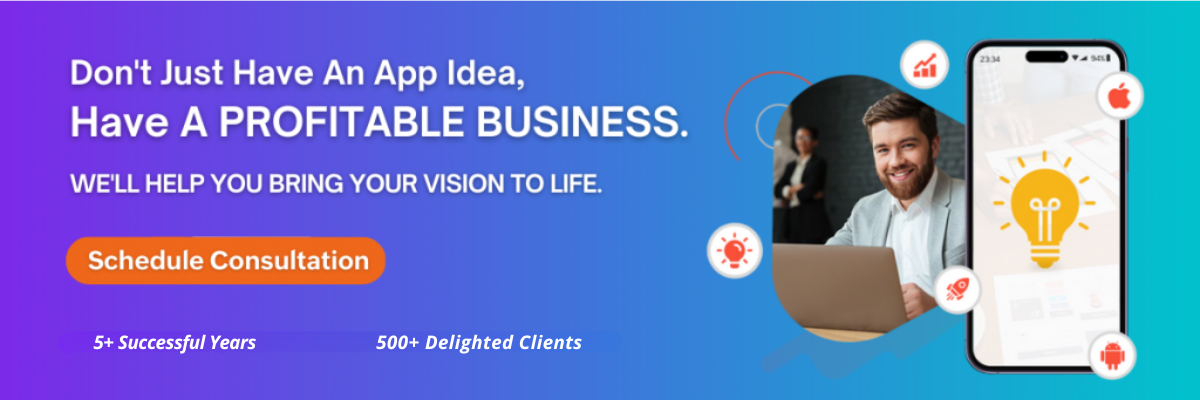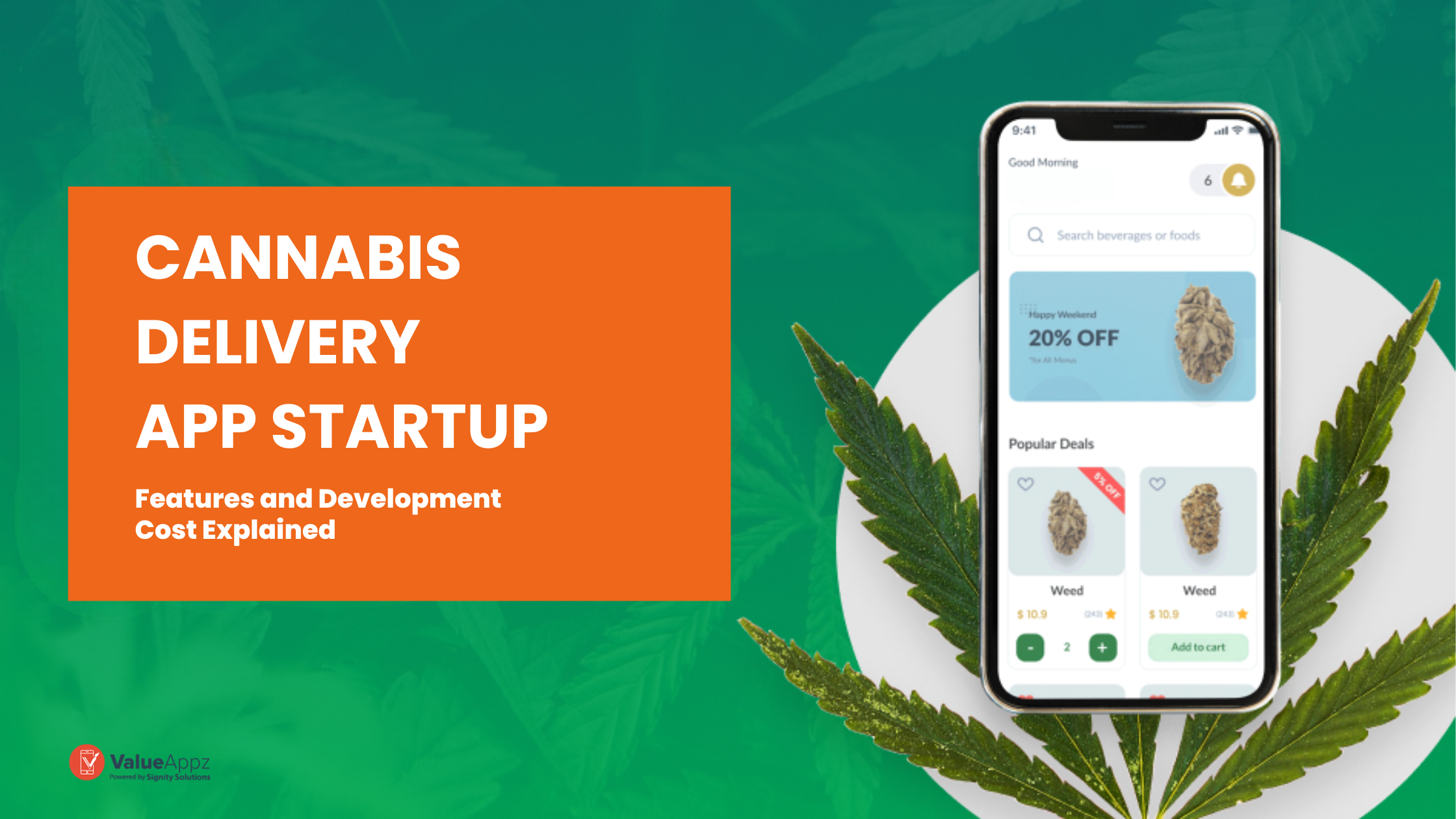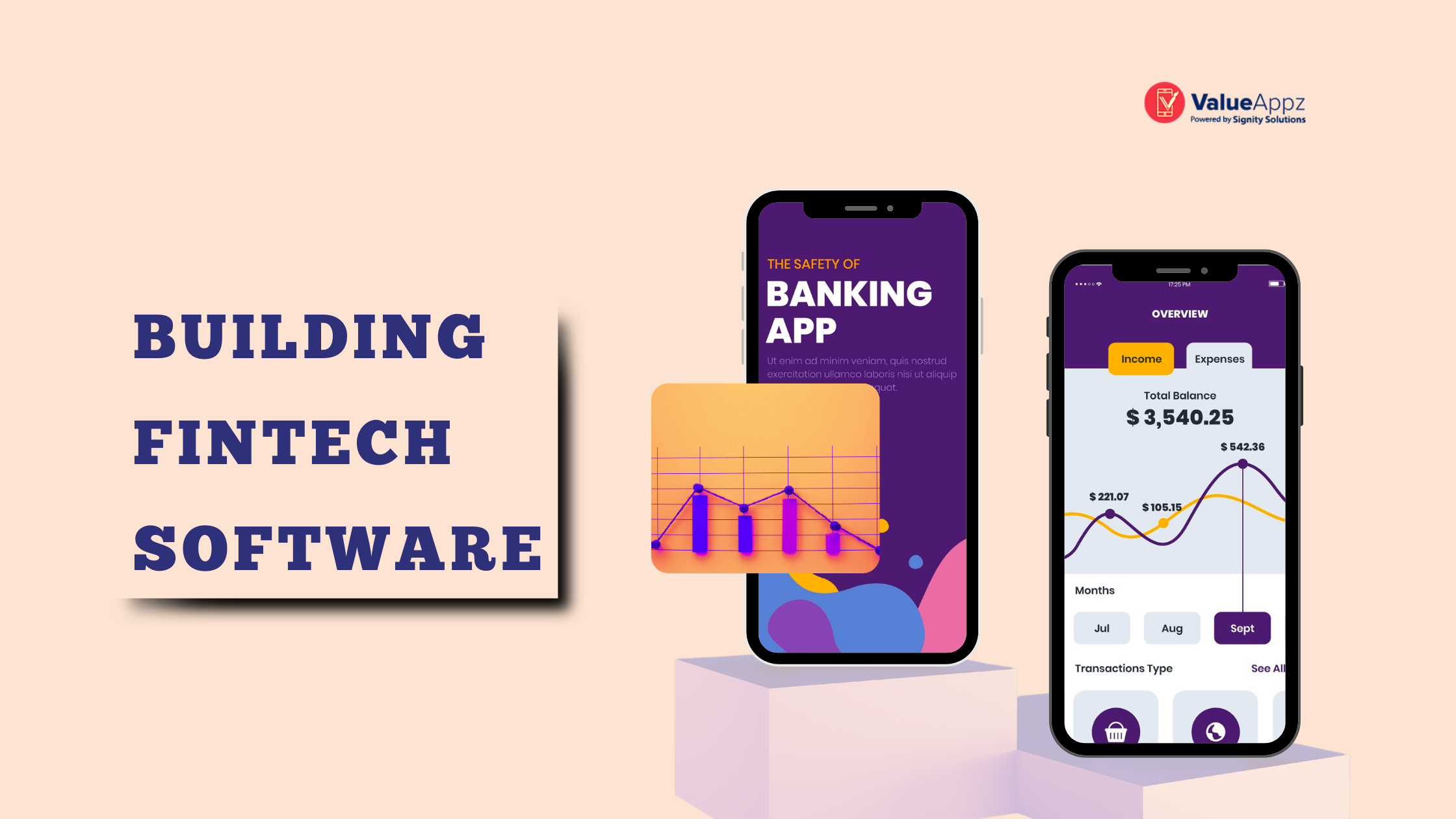Step-by-Step Process to Develop and Launch A Logistics Platform
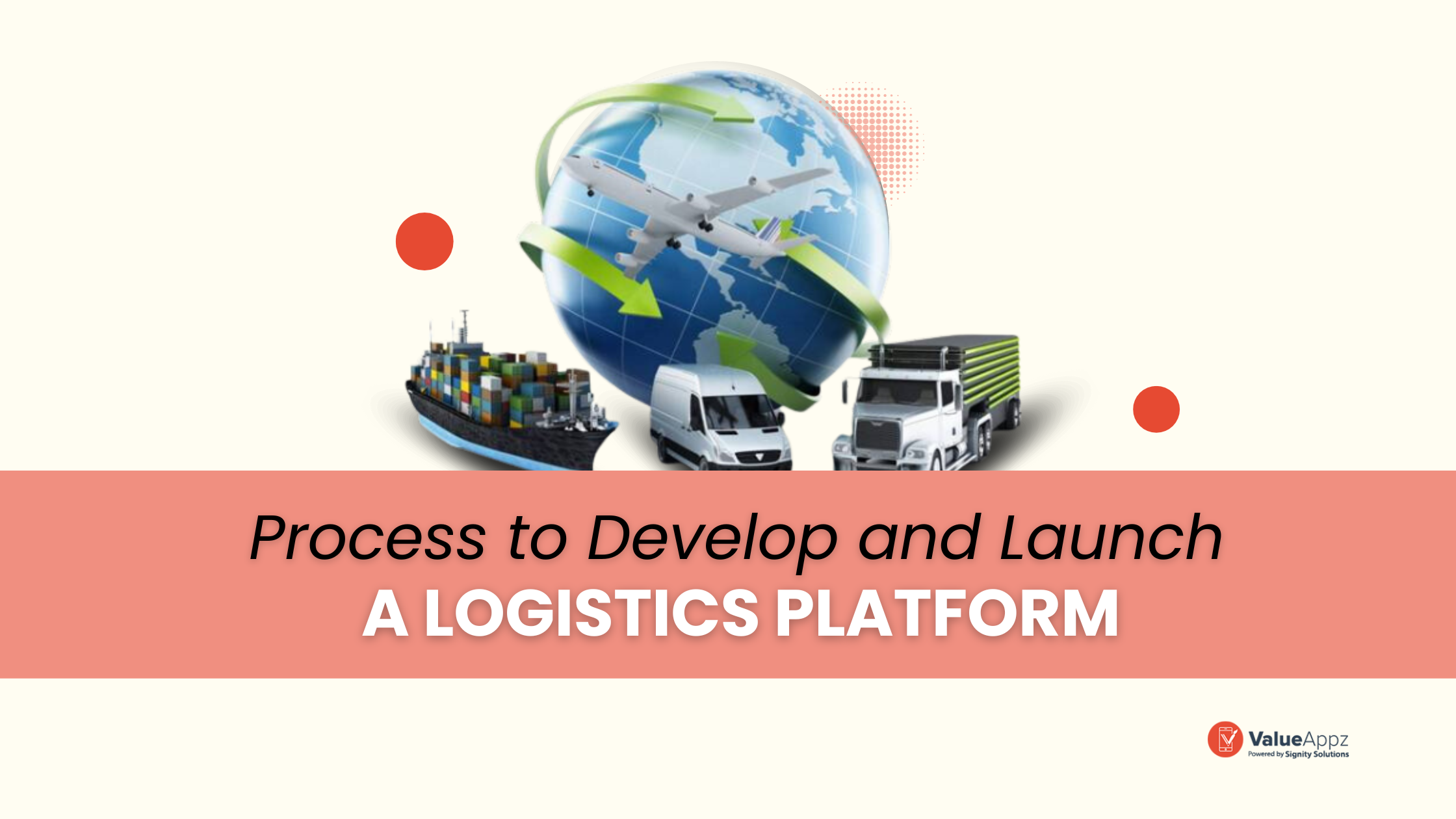
Quick Summary: Are you planning to build an app for your logistics services to enhance your sales and customer experience? Read our blog and explore how to create a logistics app, the must-have features, various types, and the cost of logistics app development.
In today’s fast-paced world, logistics management is a critical component of businesses that deal with the movement of goods. To optimize these intricate processes, logistics app development has emerged as a valuable tool. This technology empowers businesses to automate and streamline various logistics aspects, from handling fleets to managing orders and inventory.
In 2022, the logistics market size was valued at $9,833.8 billion, and this is projected to reach $16,794.7 billion by 2032. This industry is widely known for the process of coordinating and moving resources like food, liquids, inventory, and more. So, whatever industry it might be, there will always be a need for logistics services, and everyone looks for convenient and quick services that can get their work done fast. Hence, building a logistics platform can boost your startup due to its huge demand.
Wondering how to create a logistics app? This blog is your complete guide to logistics app development, features you must include, and the logistics app development cost.
Table of Contents
Reasons Why You Should Invest in a Logistics App
In the fast-evolving landscape of logistics, staying ahead of the curve is no longer an option—it’s a necessity. Investing in a logistics platform brings forth a multitude of advantages that can redefine the way businesses operate. Other than its rising demand, the advantages of leveraging logistics software are far-reaching and can have a transformative impact on your business. These include:
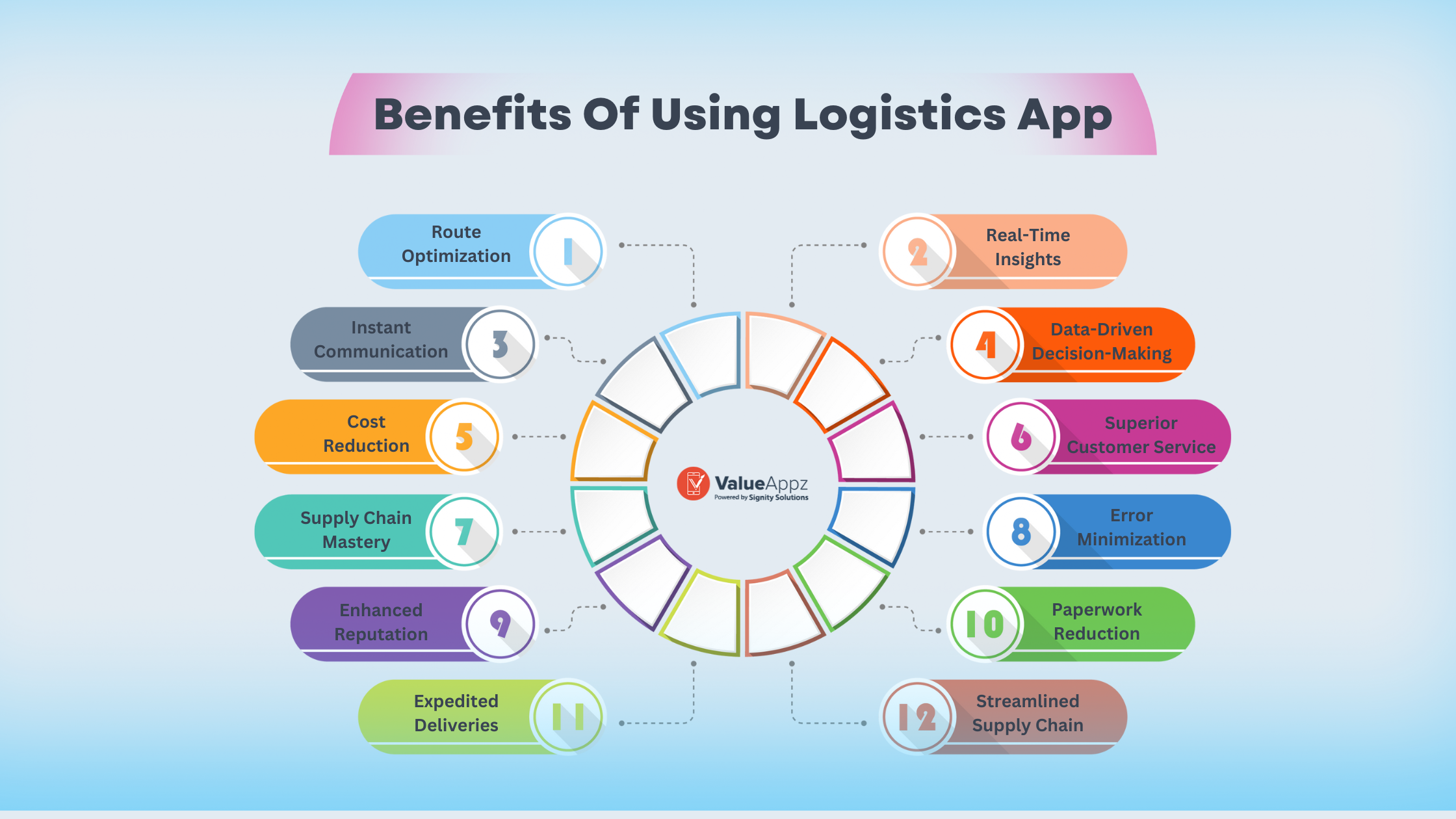
- Route Optimization: Seamlessly plan the most efficient routes, leading to quicker deliveries and reduced transit times.
- Real-Time Insights: Gain immediate visibility into all aspects of your logistics operations, making informed decisions a reality.
- Instant Communication: Facilitate swift and effective communication among team members and stakeholders.
- Data-Driven Decision-Making: Access fast and comprehensive data reports, empowering you to make strategic choices.
- Cost Reduction: Cut down on transportation and operational costs by streamlining your processes.
- Superior Customer Service: Elevate your customer service by offering real-time updates and efficient delivery services.
- Supply Chain Mastery: Streamline your supply chain, ensuring the right products reach their destination at precisely the right time.
- Error Minimization: Reduce the likelihood of human errors in your logistics operations.
- Enhanced Reputation: Logistics apps with user-friendly interfaces create a favorable impression, elevating your company’s reputation.
- Paperwork Reduction: Bid farewell to manual paperwork, transitioning to e-bills and digital processes for improved efficiency and sustainability.
- Expedited Deliveries: Real-time updates and efficient tracking ensure swifter deliveries and reduced costs.
- Streamlined Supply Chain: Logistics apps simplify supply chain processes, instilling transparency and trust through advanced technologies like blockchain.
Now that you know how supply chain app development can help grow your business and sales, let’s discuss the complete process of building the app.
Check our blog to learn more about top marketplace business models to invest in 2024 and steps to launch one.
Steps To Create a Transportation & Logistics App
Logistics app development requires a complete process for developing a scalable app that helps the users, drivers, and businesses with the right functionalities. The steps to make a transportation and logistics app include:
1. Define Your Niche and Target Audience
The first step towards logistics app development is defining the niche and your target audience. There are various types of supply chain apps that you can invest in, but it requires careful consideration:
- Fleet Management Apps: A fleet management app is a software platform with features like real-time vehicle tracking, maintenance management, and driver monitoring that make it easier to manage and optimize a fleet of vehicles.
- Warehouse Management Apps: An application for warehouse management is a software created to simplify and enhance warehouse functions like labor scheduling, order fulfillment, inventory management, etc.
- Third-Party Logistics Apps: These apps provide capabilities like electronic proof of delivery, route optimization, and delivery monitoring in order to simplify and enhance logistics operations.
- Last-Mile Delivery Apps: With capabilities like electronic proof of delivery, route optimization, and delivery tracking, last-mile delivery intends to simplify and enhance the last stage of the delivery process.
- Supply Chain Management Apps: In order to efficiently create completed items, supply chain management software digitally coordinates the purchasing, shipping, warehousing, and monitoring of raw materials and components.
- Freight Brokerage Apps: The purpose of freight brokerage applications is to match available transportation capacity with freight requests, acting as a middleman between shippers and carriers to enable the efficient transfer of cargo.
- Inventory Management Apps: Inventory management apps are made to monitor and regulate how a firm orders, stores, and uses its inventory in order to guarantee effective supply chain management and stock control.
So, the first step is to choose the right niche for your business.
2. Plan Your App’s Features and Functionalities
The second step in logistics app development is choosing the right features and functionalities to engage the users. Adding the right features to the app will enable you to attract users quickly and provide a seamless user experience. The features that you must include in the transportation and logistics app are:
End-User Application

- User Registration: Allow customers to create accounts within the app. This feature enables them to manage their profiles, saving preferences and personal information for convenient use.
- Booking and Scheduling: Provide users with the ability to book transportation services, select pickup and drop-off locations, and schedule rides in advance. This feature offers flexibility and convenience.
- Real-time Tracking: Offer customers real-time updates on the location and estimated time of arrival (ETA) of their assigned vehicles. This feature enhances transparency and customer satisfaction.
- Fare Estimation: Calculate and display fare estimates based on factors like distance, time, and additional charges. This helps customers plan and budget for their rides.
- Multiple Payment Options: Integrate various payment methods, including credit cards, mobile wallets, and cash, to accommodate different customer preferences and ensure seamless transactions.
- Reviews and Ratings: Enable customers to rate their drivers and provide reviews about their overall experience. This promotes driver accountability and helps maintain service quality.
- Customer Support: Include an in-app support system for customers to contact support agents, report issues, or seek assistance with inquiries or concerns.
Driver Applications

- Driver Registration: Allow drivers to create profiles, submit necessary documents, and undergo verification processes. This ensures that only qualified drivers are part of the transportation network.
- Ride Acceptance: Enable drivers to accept or decline ride requests based on their availability and proximity. This feature allows drivers to manage their workload effectively.
- Navigation and Route Optimization: Integrate GPS navigation systems to assist drivers in finding the best routes, optimizing travel time, and avoiding traffic congestion. This enhances driver efficiency and customer satisfaction.
- Earnings and Reports: Provide drivers with detailed reports on their earnings, trip history, and performance metrics. This transparency helps drivers evaluate their performance and income.
- Driver Ratings: Allow customers to rate drivers and provide feedback on their performance. This feedback mechanism ensures ongoing quality improvement in service delivery.
- Driver Support: Offer an in-app support system for drivers to contact support agents, report issues, or seek assistance with any concerns or challenges they may encounter.
- Driver Incentives and Bonuses: Implement a rewards system to motivate drivers. Offer incentives based on performance, completion of a certain number of rides, or other criteria to keep drivers engaged and satisfied.
Admin Panel

- Dashboard and Analytics: Provide a centralized dashboard for admins/operators to manage and monitor the entire transportation system. This includes trip analytics, driver performance tracking, and user statistics.
- Driver Management: Enable admins to onboard and manage driver profiles. This includes verification processes, document management, and ensuring compliance with standards.
- Customer Support: Offer an admin panel for handling customer support queries, resolving issues, and managing refunds or complaints efficiently. This ensures a high level of customer satisfaction.
- Pricing and Fare Management: Allow admins to set and manage pricing structures, surge pricing during peak hours, and fare calculations based on various variables such as distance, time, or demand. This feature provides flexibility and revenue optimization.
- Notifications and Communication: Facilitate seamless communication with customers and drivers through push notifications, alerts, and announcements. This ensures that all stakeholders are well-informed and engaged.
- Reporting: Generate comprehensive reports and analytics on key metrics such as revenue, user engagement, driver performance, and market trends. These insights are valuable for decision-making and strategic planning.
- System Configuration and Settings: Provide admins with control over system configurations, settings, and customization options. This feature allows administrators to adapt the platform to evolving business needs and market conditions.
3. Consider the Cost for Logistics App Development
When building a logistics app, considering the cost of development is another crucial aspect. As a startup, entrepreneurs look for cost-effective solutions that provide quality within their budget. On the basis of the features, here’s the information presented in a more structured manner for a logistics app development cost estimation:
- App Complexity and Features:
- A simple logistics app with basic functionality: $25,000 to $35,000.
- Medium applications with average complexity and features: $35,000 to $50,000.
- Fully-fledged logistics app with advanced functionality and interactive features: $80,000 and above.
- Backend and Frontend Development:
- The choice of backend and frontend frameworks, as well as the technology stack, significantly influences costs.
- Microservices architecture can be more expensive compared to monolithic architecture.
- The ability to scale the app for future business needs is a consideration.
- Technology Stack:
- The technology stack chosen for the logistics app affects costs.
- Using a popular native technology stack may be more expensive than a less cross-platform tech stack. Consider a cross-platform application for cost-efficiency, as it can work well on both platforms.
- The complexity of your app and its features will determine the technology stack required, potentially increasing development costs.
- Platform Selection:
- The platform (Android or iOS) chosen impacts development costs.
- Android app development is generally more expensive due to device fragmentation.
- App Development Team Size:
- The size of your development team influences costs.
- A larger team requires more resources, such as salaries and equipment, leading to higher expenses.
- A smaller team may have lower costs due to fewer people and resources.
- Consider hiring a logistics app development agency for successful results.
These factors collectively determine the cost of developing a logistics app. The specific project requirements, features, and technology choices will have the most significant impact on the final cost.
4. Design and Develop the App
Once you have decided on the app’s features and functionalities, the next step is to design and develop the app. With the help of the right logistics app developers, you can build an intuitive and user-friendly interface for a smooth experience.
For instance, ValueAppz is a leading logistics app development company where we have dedicated teams with the right expertise who can help you design and develop the perfect logistics app.
With the latest tech stacks like React, Node, and Next.js, we develop robust logistics apps for various industry needs. From adding customized features to alluring designs, our team will help you get the perfect logistics mobile application for your business.
5. Test and Launch
Once the app is ready, it must go through proper testing to ensure that it is free of any errors. After necessary iterations, you can launch the logistics app on the respective platforms and begin the marketing. Implementing the right marketing strategies is crucial in order to stay ahead in the market.
Get a Robust App With Our Logistics App Development Services
Get a Robust App With Our Logistics App Development Services
In the dynamic world of logistics, where innovation and continuous improvement are paramount, partnering with an experienced logistics app development company like ValueAppz can be a game-changer. The logistics industry’s evolving demands and complex challenges require a technology solution that can adapt and grow with your business. ValueAppz brings a wealth of expertise and a commitment to crafting compelling logistics apps tailored to your unique requirements.
Key Takeaways
- The logistics market, valued at $9,833.8 billion in 2022, is expected to reach $16,794.7 billion by 2032, highlighting the strong demand for logistics apps.
- Key features for a logistics app include real-time tracking, route optimization, multiple payment options, and robust customer support to enhance efficiency and user experience.
- Logistics app development costs range from $25,000 for basic apps to over $80,000 for advanced ones, influenced by complexity, technology choices, platform, and team size.
- Building a logistics app involves defining the niche, planning features, estimating costs, designing, developing, testing, and launching, ideally with experienced developers.
Frequently Asked Questions
Q1. How can I choose the right transportation and logistics app for my business?
There are various types of transportation and logistics apps, like inventory management apps, fleet management apps, warehouse management apps, etc. To choose the right type of app, you must understand your business niche well.
Q2. How to develop a logistics app?
The steps to build a logistics app include:
- Defining the business niche and target audience
- Planning app’s features and functionalities
- Considering the cost of development
- Designing and developing the app
- Testing and launching the app
Q3. Do transportation and logistics apps offer different service options?
Yes, transportation and logistics apps provide various service options like carrier research, freight forwarding, order fulfillment, inventory management, etc.
Q4. What are the security considerations when using a transportation and logistics app?
To ensure security when using a logistics app, it is crucial to prioritize cyber measures and verify carriers’ credentials to safeguard freight, data, and operations.
Q5. How much does it cost to use a transportation and logistics app?
A simple logistics app with basic functionality costs about $25,000 to $35,000. The cost further depends on the app design, features, platforms, etc.
💡 Editor’s Note: This blog entry was originally published on Oct 18, 2023, and is updated on May 20, 2024
THE AUTHOR
Harjyot kaur
As a technical content writer my focus is on creating high-quality, engaging, and informative content that simplifies complex technical topics. Throughout my career, I have continuously pursued opportunities for growth and development, refining my skills and expanding my knowledge base.

Get ready to digitally transform your business.
Let our team help take your business to the next level. Contact us today to get started on finding the perfect solutions for your business needs.

